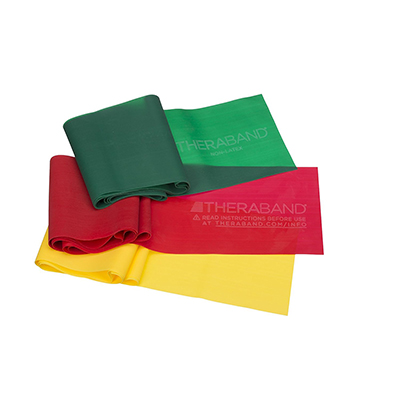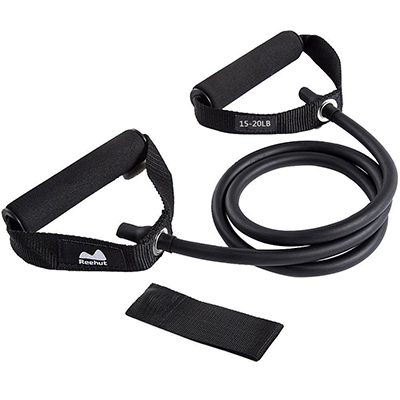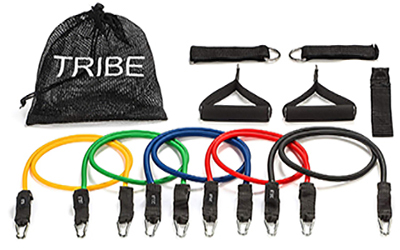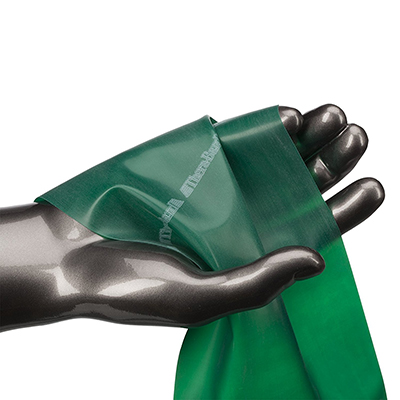Resistance Bands. Originally for use in nursing homes and rehab centers to train older adults. Due to portability and ability to effectively mimic resistance training load. But it’s not just grandma and grandpa benefiting. Athletes are also partaking in the rubberized movement. Researchers at the School of Sports and Recreation at the Institute of New Zealand performed a survey of 167 strongman competitors — 65 were national level competitors — looking at their strength and conditioning practices. The study revealed that 38% of the athletes used elastic bands as part of their strength training programs. You’ll also see them used on the baseball field, in the strength and conditioning rooms of major athletic teams and college programs everywhere.
How Does This Stuff Work?
Our muscles have a natural strength curve that is bell shaped. This means that when we contract a muscle to move a weight, like a bicep curl, there exists a point when we are weakest-strongest-then weak again. For example, a bicep curl, an isotonic exercise, these points would correspond to the beginning, middle and end of the curl. Ever notice how light the weight feels once you have curled it to its full position? Well, this is why. The strength curve is also referred to as torque. The torque produced by the bands are ascending and descending where they are also pretty well matched to our strength curve. This allows users to benefit as though they were using machines or free weights.
There are, however, a couple of major differences. First, the harder you pull the harder it gets. Aside from the obvious difference of holding a dumbbell vs. a tube, the force or resistance produced by elastic is linear and ascending. That means that the more you stretch the band, the more force or resistance produced. Makers of the Thera-Band, say the resistance is directly dependent on the elongation and not the starting length of the band. For example, start with one foot of their red simple resistance band and stretch it to two feet, or 100% elongation and you will have the same force as a two foot band stretched to four feet. Both would equal four pounds of force.
Second, unlike free weights at faster speeds. The elastic bands don’t really change the strength curve. Compare strength bands to pulleys or machines, the eccentric (negative) resistance of the bands is the same as the concentric. This translates to a more constant force output in both directions of the movement. Pulleys become easier in the eccentric part of the movement.
What’s Out There?
- Flat (simple or plain) band: Typically a flat piece of material. Tied or secured to other implements.
- Tube: An off-shoot of surgical tubing with the same elastic properties of the flat band. It can be attached to handles or other accessories.
- Closed or continuous loop: These look like oversized rubber bands. Commonly used by power lifters.
- Braided cords: Made up of braided strips of material. Increase the bands longevity and user resistance.
Brands to Look Out For
Thera-Band
(Price varies): The Hygienic Corporation, established in 1976, produces a range of elastic and therapeutic products. This company is extremely reputable and their products can be found in therapy clinics and gyms nationwide. They offer both simple bands and tubes with a number of accessories. The Thera-band strength bands are a great choice for rehab and fitness enthusiasts. They are primarily sold at medical supply stores, but you can find a retailer through their website.
Reehut Single Resistance Band Exercise Tube
When you think of resistance bands, the single red tube with black handles is usually what comes to mind and this band doesn’t disappoint. The tube provides five pounds of resistance and is great for someone who’s doing at home physical therapy or just getting started with resistance training. It comes with a door anchor so you can hook yourself up to just about anywhere. You can opt for different weights like extra light (2-4 pounds) and as heavy at extra strong (75 pounds). Whether you’re interested in toning, Pilates or outdoor workouts, this simple tube delivers. And if you’re not sure where to start, an instruction manual can help you get started.
Tribe 11PC Premium Resistance Bands Set
This color coded system provides bands that are made of latex and silicone. This means no snapping during your workouts. Rather than a standard tube into handle configuration, metal clips that are attached to the tube guarantying your safety and no interruptions. These bands range in resistance from a light five pounds to as heavy as 35 pounds. Each band is 48” long and can be attached to a door anchor. They also include ankle straps which are a big help during leg work. A great addition for a newbie resistance trainer or a seasoned athlete looking to amp up their workouts.
TheraBand Professional Latex Resistance Bands
A continuous loop style, it is great for resistance training or if you’re rehabbing your muscles. It’s also effective for improving strength, range of motion and flexibility. TheraBand offers a color-coded system, allowing you to progress from one level of resistance to the next. Ideal for travel and can be used anywhere from your home, during trips or at your usual gym haunt.
As you can see, resistance bands are for everyone and are here to stay. Their numerous uses and benefits including increase in strength, speed and coordination, resistance bands can be an integral part of your strength and conditioning regimen. Best of all, it can be your traveling workout companion.
Image credit: istockphoto.com/Herreid





